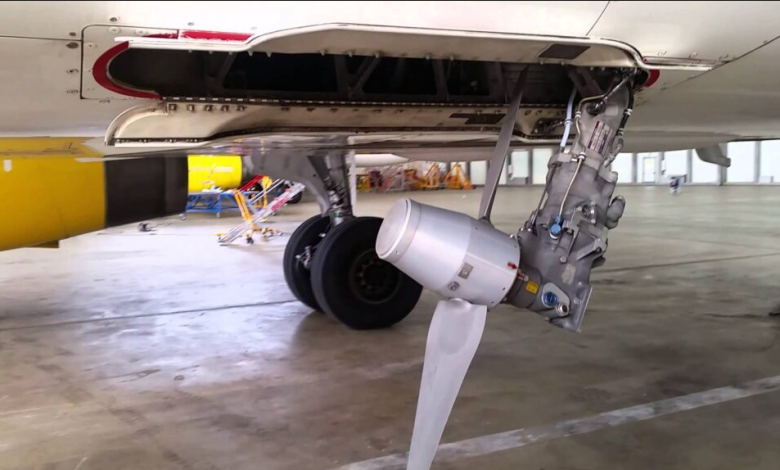Unveiling the Hidden Hero of Aviation: The Ram Air Turbine


The Ram Air Turbine (RAT) is indeed a fascinating and often overlooked component in aviation. It serves as an emergency power source that can be a true hero when other systems fail. Here’s a closer look at the RAT and its crucial role in aviation safety:
1. What is a Ram Air Turbine (RAT)?
A Ram Air Turbine is a small, independent, and typically deployable wind-driven generator mounted on an aircraft. It operates on the principle of wind energy conversion, similar to a wind turbine, but it’s designed to produce hydraulic or electrical power when the aircraft faces certain emergency situations.
2. Emergency Power Source:
The primary purpose of a RAT is to provide essential power in emergency scenarios when the aircraft’s primary power systems fail. These situations could include the loss of both engines (dual-engine failure), electrical system failures, hydraulic system failures, or any other condition where power is needed to control critical systems.
3. Deployment and Operation:
When activated, the RAT deploys from its stowed position, typically in the fuselage or wing, into the airstream. As the aircraft moves forward, the RAT’s blades rotate, harnessing the kinetic energy of the oncoming air. This rotational energy is then converted into hydraulic or electrical power.
4. Hydraulic Power Generation:
In some aircraft, the RAT is connected to a hydraulic pump, which generates hydraulic pressure. This pressure can be used to power vital systems like the landing gear, flaps, and flight control surfaces, allowing the pilot to maintain control and safely land the aircraft.
5. Electrical Power Generation:
In other aircraft, the RAT is linked to a generator, producing electrical power. This electricity can be used to run essential avionics, instruments, and lighting systems, ensuring the pilot has critical information and visibility.
6. Redundancy and Safety:
RATs are designed to provide redundancy and ensure that an aircraft can continue to operate crucial systems even if the primary power sources fail. This redundancy is a critical safety feature, and RATs are rigorously tested to ensure their reliability.
7. Historical Significance:
One of the most famous instances of a RAT deployment was during the “Miracle on the Hudson” in 2009 when US Airways Flight 1549 lost both engines after bird strikes. Captain Chesley “Sully” Sullenberger successfully glided the plane onto the Hudson River, and the RAT provided power for essential systems during the emergency landing.
In conclusion, the Ram Air Turbine is an unsung hero in aviation, providing a vital lifeline when all else fails. It exemplifies the importance of redundancy and safety in aircraft design, ensuring that pilots have the tools they need to handle emergency situations and ultimately saving lives in critical moments.




